About World Geographical Information

Geography is the study of the earth in all its variety, it deals with the human geography, environment geography and the physical geography. Geography is natural in everyone’s lives. It is all around us helping to instill consideration for the world, its environments and its peoples. Physical geography deals with the study of processes and patterns in the natural environment like the atmosphere, hydrosphere, biosphere, and geosphere.
The Earth was formed about 4.7 billion years ago. The Earth’s shape is very close to that of a sphere, not perfectly spherical. The Earth’s equatorial diameter is about 12,756 km, which is slightly larger than the polar diameter, about 12,714 km Surface Area of the Earth is 510,065,600 km2 of which 148,939,100 km2 (29.2 %) is land and 361,126,400 km2 (70.8 %) is water.
The Earth rotates in counter-clock direction or from left to right-or eastward direction. Rotation serves three reasons. First, the axis of rotation serves as a reference in setting up the geographic grid of latitude and longitude. Second, it provided a good measure of the passage of time, 24 hours or 1440 minutes or 86,400 seconds a day. Third, it greatly influenced the physical and life processes on Earth.
Oceans
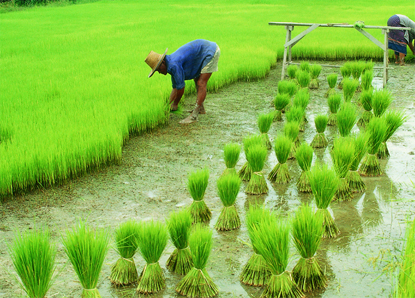
Oceans cover more than 70% of Earth’s surface. About 97% of Earth’s water is contained in oceans and seas. The five oceans—the Pacific, Atlantic, Indian, Southern, and Arctic—are all connected and form an enormous mass of water. Seas are smaller bodies of salty water within the oceans. The oceans are salty, which makes them unsuitable for drinking. Most of the salt comes from minerals from rocks and soil that have been washed from the land and carried into the oceans by rivers. The minerals are mostly chloride and sodium, which combine to make salt. Most of our table salt comes from the oceans.
Indian Ocean
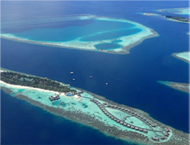
Indian Ocean is the third largest ocean in the world. Covering an area of around 73,556,000 square kilometers, Indian Ocean has been home to a rich variety of human kind throughout the world history. Indian Ocean is bordered by eastern coast of Africa, the shores of Middle East and India in the north. It is separated from the Pacific Ocean by south East Asia and Australia. Indian Ocean is also rich in exotic plan and animal species.Around 20% of all the water on the Earth’s surface is in the Indian Ocean. It is the youngest of all the major oceans on the earth.The India Ocean is known to be quite warm, which keeps the production of phytoplanktons low. As such, there is limited life in this ocean.
Pacific Ocean
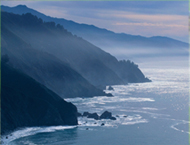
The largest of all the oceans is the Pacific Ocean. It is located between the western coastlines of the American continents and eastern coast lines of Asia and Africa. . Covering about 165,200,000 square kilometers the Pacific Ocean has the longest total shore line of about 135,663 kilometers.The Pacific Ocean covers 46% of the total water surface of the Earth, and covers more than a third of the total surface area. It is actually larger than all the land area combined. The water in the ocean represents around 50.1% of the total oceanic water on earth. The Pacific Ocean is known to be the most peaceful one.
Arctic Ocean
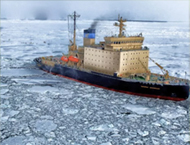
Arctic Ocean is the smallest and shallowest of all the oceans in the world. It clovers and area of around 13,986,000 square kilometers. This is almost the size of the whole of the country of Russia. Arctic Ocean lies mostly in the Arctic Circle. Artic Ocean is surrounded by the Eurasian and north American continents. It includes the Hudson Bay, the North Sea and Barents Sea. For most of the time of the year, this sea is covered with ice often thick as up to hundreds of feet. Even during the summer season most of the ocean remains impassable.
Antarctic Ocean
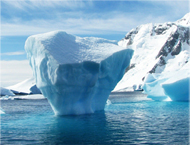
Antarctic Ocean covering an area of around 20,327,000 square kilometers is the fourth largest ocean in the world. It is also referred by many as the southern ocean as it is located near to the South Pole. Antarctic Ocean has a great influence on the earth’s weather patterns. It joins the waters of Pacific Ocean, Atlantic Ocean and Indian Ocean with a persistent easterly current. The cold, northward flowing waters in the Antarctic mix with the warmer waters of the subantarctic in the ocean zone.The Antarctic Ocean is a storehouse of natural resources. It contains giant oil and gas fields and valuable minerals as well.
Atlantic Ocean
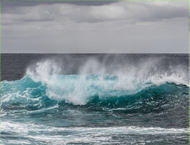
Atlantic Ocean is the second largest ocean in the world with an area of 106,400,000 square kilometers. It is bordered by Americas in the west and Africa and Europe in the east. Atlantic Ocean consists of the Mediterranean Sea, Caribbean Sea, Baltic Sea and the Gulf of Mexico. This ocean is also the second youngest among all oceans.
Continent
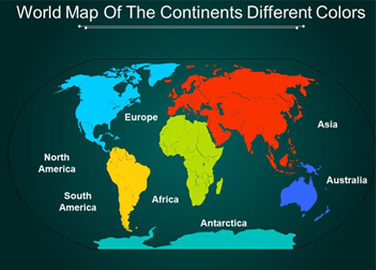
Continents are very large landmasses found on Earth. The Earth has seven such continents. They are (from largest in size to the smallest): Asia, Africa, North America, South America, Antarctica, Europe and Australia.
Asia
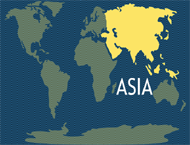
Asia being the largest of the continents covers around one-third of the world’s total land area. Asia is known for its vast size and incomparable character. It stretches all the way east from japan to the south east Arabian Peninsula, which is more than 8500 kilometers away. I is interesting to see the geographical composition of Asia. It encompasss the entire climate and expanse, be.
It the equatorial rain forest or the arctic tundra. It is surrounded by Indian Ocean in the south, Pacific ocean in the west, and north by arctic ocean. The continent was named as Asia by the people of Western Civilization.The total area occupied by this continent is 43,810, 000 sq kms. The Indian Ocean separates India from Africa. Asia consists of 60% of world's population. Asia is a very wonderful place if you want to take a tour around the world. You can view many mountain peaks, hills, lakes, rivers, and many other natural resources.
Africa
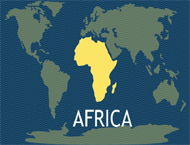
Africa is the second-largest and also the second most populated continent in the world, after Asia. The continent of Africa covers 20.4% of the world’s total land area. Africa has a population of 1 billion which accounts for about 14.72% of the world’s human population. It occupies an area of 30,221,532 k.m. Africa is termed as a dark continent for a number of reasons.
The main reason for this tag is because it was unknown to the world for many years. The continent did not make any progress for a number of years. It was a continent that was totally isolated from the other continents for a number of years. The continent was covered and ruled by the culture of fauna and flora. The equator intersects it and the expansive landmass covers the Sahara, which is the world’s largest desert, and the Nile, the longest river on the earth, as well as 53 nations. Africa is famous for it’s diamond, gold, uranium and copper mining.
Europe

Europe by convention, is one of the world’s seven continents divided from Asia by the Ural mountains stretching right up to the Caspian Sea. It is the world’s second-smallest continent by surface area. It covers about 6.8% of the Earth’s surface area. It is bordered by the Arctic Ocean to the north, the Atlantic Ocean to the west, the Mediterranean Sea to the south, and the Black Sea to the south east. Europe is the third most populous continent after Asia and Africa, with a population of 733 million, about 11% of the world’s population.
Europe occupies nearly 10,180,000 sq km of earth's area. The country most densely populated in Europe is Russia. Greece is the oldest country founded in Europe. The people of Europe follow the Roman script. Today Europe is one of the most economically progressed continents next to North America.
The World Wars were both concentrated around Europe, and that led to a decline in the dominance of the continent in world affairs by the time the world came on to the 20th century. Politics and economics had been affecting the countries largely leading to several changes all throughout history. Nowadays, the European Union has started having an influence over the member countries. A wide variety of mineral resources are found in Europe, including coal, petroleum, and natural gas, copper, lead, iron and tin.
Antarctica
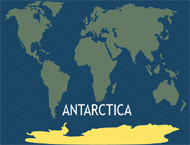
Antarctica is the fifth largest continent in area. About 98% of Antarctica is covered by ice that averages about 1.6 kilometers in thickness. It is the coldest, driest and windiest continent. Antarctica is considered a desert, with only 8 inches of rainfall in a year. There are no permanent residents on this island, but only a few thousands of people, who live here at the research stations found across the continent.
Temperatures in Antarctica can drop to as low as -89 degrees Celsius. Antarctica is home to a variety of penguin species who have adapted to these harsh conditions. This region is also vital for the survival of the ecosystem.The total world's area occupied by Antarctica is 14.2 million sq kms.The total population as estimated is only 4000 to 5000 in Antarctica. The human population is nil here because no human being can survive in such a cold region. The area is only utilized for scientific discovery and exploration.
South America
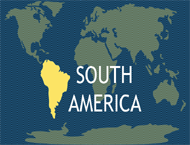
South America is the fourth largest continent in terms of area. It is also the fifth most populous continent after Asia, Africa, Europe and North America. South America is bordered on the west by the Pacific Ocean and to the north and east by the Atlantic Ocean. South America includes 12 independent countries – Argentina, Brazil, Chile, Columbia, Ecuador, Guyana, Paraguay, Peru, Suriname, Uruguay, Venezuela and French Guiana. South America is home to the world’s highest waterfall, the largest river by volume, the longest mountain range, the world’s largest rainforest, the driest place on earth and many other geographical wonders.
The total world's area occupied by the continent is 17,838,000 sq kms. The total population of this continent is 365366600. Different parts of South America experience varied types of climate such as the sub-tropical in the north, Mediterranean in the south and tropical climate by the Amazon basin.
South America is a continent which is diverse in terms of geography and biodiversity. The world’s highest uninterrupted waterfall, angel falls is situated in Venezuela in South America. The Amazon River, which is the largest river in the world in terms of volume, is also in this continent. The Atacama Desert, which is the driest non polar place on earth, and the Amazon forest which is the largest rainforest on earth, is situated in this continent. It is also home to many interesting and unique species of animals such as anaconda, piranha, jaguar etc.
North America
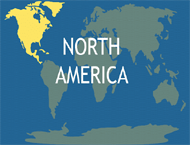
North America is the third largest continent. It occupies 16.5% of the planet’s land area. In 2008, its population was estimated at nearly 529 million people. It is the fourth most populous continent after Asia, Africa and Europe. It is bordered to the north by the Arctic Ocean, to the east by the Atlantic Ocean, to the west and south by the Pacific Ocean, and to the southeast by South America and the Caribbean Sea.
It occupies 3.5% of the total of the world's area as the total area occupied is 6.9 million sq kms. This continent is enriched and known to the world by the Amazon basin which is filled with abundant natural resources. Most of the area of the North America is filled by Andes mountain.More than 1700 species of birds live and breed on this continent. North America has large deposits of many important minerals, including iron, ore, copper, nickel and uranium.
Waterfalls
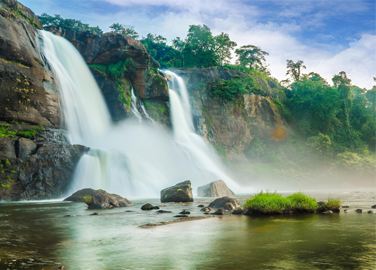
Waterfalls are indeed natural wonders. Streams of water flowing from as high as the sky – the beauty of waterfalls are inexplicable. A true spectacle, waterfalls are proof of wonders and beauty of Mother Nature. While every waterfall is a beauty by itself, the taller the waterfall, the more lovable it is.
| S.No | Name of waterfall | Height | Location | |
|---|---|---|---|---|
| Feet | Meters | |||
| 1 | Angel Fall | 3,212 | 979 | Venezuela |
| 2 | Tugela Falls | 3,110 | 947 | South Africa |
| 3 | Cataratas las-Tres Hermanas Falls | 3,000 | 914 | Peru |
| 4 | Olo’upena Falls | 2,953 | 900 | Hawaii |
| 5 | Catarata Yumbilla Falls | 2,938 | 896 | Peru |
| 6 | Vinnufossen Falls | 2,822 | 860 | Norway |
| 7 | Balaifossen Falls | 2,788 | 850 | Norway |
| 8 | Pu’uka’oku Falls | 2,756 | 840 | Hawaii |
| 9 | James Bruce Falls | 2,755 | 840 | Canada |
| 10 | Browne Falls | 2,744 | 836 | New Zealand |
| 11 | Strupenfossen Falls | 2,690 | 820 | Norway |
| 12 | Ramnefjellsfossen Falls | 2,685 | 818 | Norway |
| S.No | Name of waterfall | Height | Location | |
|---|---|---|---|---|
| Feet | Meters | |||
| 13 | Waihilau Falls | 2,600 | 792 | Hawaii |
| 14 | Colonial Creek Falls | 2,584 | 788 | Washington |
| 15 | Mongefossen Falls | 2,535 | 773 | Norway |
| 16 | Catarata Gocta Falls | 2,531 | 771 | Peru |
| 17 | Mutarazi Falls | 2,499 | 762 | Zimbabwe |
| 18 | Kjelfossen Falls | 2,477 | 755 | Norway |
| 19 | Johannesburg Falls | 2,465 | 751 | Washington |
| 20 | Yosemite Falls | 2,425 | 739 | California |
| 21 | Cascades de Trou de Fer | 2379 | 725 | France |
| 22 | Sutherland Falls | 1904 | 581 | Newzealand |
| 23 | Kukenan Falls | 2211 | 674 | Venuzula |
Deepest Lakes
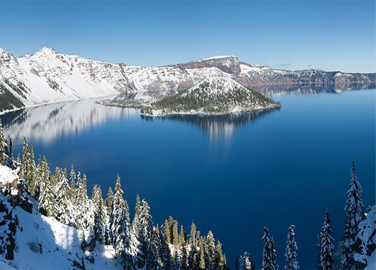
There are hundreds of major Natural lakes in the world, the lakes in the world holds most part of the total freshwater in the world, the deepest lakes are natural and thousands or millions of years old, and located in low and high altitude places, there are thousands of new kind species found in the deep water that in the lakes and ocean.
| S.no | Name Of The Lake | Depth | Location | |
|---|---|---|---|---|
| Feet | Meters | |||
| 1 | Baikal | 5369 | 1637 | |
| 2 | Tanganyika | 4,823 | 1,470 | Central Africa, Zambia |
| 3 | Caspian Sea | 3,363 | 1,025 | Iran, Russia, Turkmenistan, Kazakhstan, Azerbaijan |
| 4 | Vostok | 3300 | 1000 | Antarctica |
| 5 | O’Higgins-San Martín | 2,742 | 836 | Chile, Argentina |
| 6 | Malawi | 2,316 | 706 | Mozambique, Tanzania, Malawi |
| 7 | Great Slave | 2,015 | 614 | Northwest Territories, Canada |
| 8 | Crater | 1,949 | 594 | Oregon, United States |
| 9 | Issyk Kul | 2,192 | 668 | Kyrgyzstan |
| S.no | Name Of The Lake | Depth | Location | |
|---|---|---|---|---|
| Feet | Meters | |||
| 10 | Matano | 1,936 | 590 | Indonesia |
| 11 | Hornindalsvatnet | 778 | 237 | Sogn og Fjordane, Norway |
| 12 | Toba | 707 | 216 | Sumatra, Indonesia |
| 13 | Karakul | 689 | 210 | Tajikistan |
| 14 | Sarez | 662 | 202 | Tajikistan |
| 15 | Ranau | 571 | 174 | Sumatra, Indonesia |
| 16 | Quesnel | 515 | 157 | British Columbia, Canada |
| 17 | Ohrid | 508 | 155 | Albania, Macedonia |
| 18 | Geneva | 502 | 153 | France, Switzerland |
| 19 | Singkarak | 489 | 149 | West Sumatra, Indonesia |
| 20 | Loch Ness | 436 | 133 | Scotland, U.K |
Largest Lakes
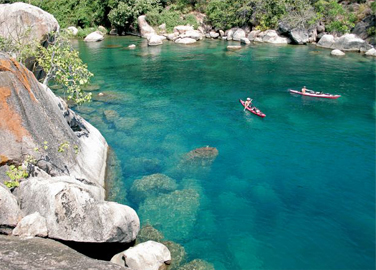
Lakes are large bodies of water that are surrounded by land and are not part of an ocean. Lakes are relatively still bodies of water when compared to a river where the water flows. They can contain either salt or fresh water and are larger than ponds.
| S.no | Name of the Lake | Area (sq. km) | Length (km) | Max Depth(m) | Location |
|---|---|---|---|---|---|
| 1 | Caspian Sea | 394,299 | 1,199 | 946 | Azerbaijan, Russia, Kazakhstan, Turkmenistan, Iran |
| 2 | Superior | 82,414 | 616 | 406 | U.S., Canada |
| 3 | Victoria | 69,485 | 322 | 82 | Tanzania, Uganda |
| 4 | Huron | 59,596 | 397 | 229 | U.S., Canada |
| 5 | Michigan | 58,016 | 517 | 281 | U.S |
| 6 | Aral | 33,800 | 428 | 68 | Kazakhstan, Uzbekistan |
| 7 | Tanganyika | 32,893 | 676 | 1,435 | Tanzania, Congo |
| 8 | Baikal | 31,500 | 636 | 1,741 | Russia |
| 9 | Great Bear | 31,080 | 373 | 82 | Canada |
| 10 | Nyasa | 30,044 | 579 | 706 | Malawi, Mozambique, Tanzania |
List of Major Fishing Grounds of the World
| S.no | Name of the Lake | Area (sq. km) | Length (km) | Max Depth(m) | Location |
|---|---|---|---|---|---|
| 1 | Great Slave | 28,930 | 480 | 614 | Canada |
| 2 | Chad | 25,760 | 7 | Chad, Niger, Nigeria | |
| 3 | Erie | 25,719 | 388 | 64 | U.S., Canada |
| 4 | Winnipeg | 23,553 | 425 | 62 | Canada |
| 5 | Ontario | 19,477 | 311 | 237 | U.S, Canada |
List of Major Mountain Ranges of the World
| S.no | Name of the Lake | Area (sq. km) | Length (km) | Max Depth(m) | Location |
|---|---|---|---|---|---|
| 1 | Balkhash | 18,428 | 605 | 27 | Kazakhstan |
| 2 | Ladoga | 18,130 | 200 | 225 | Russia |
| 3 | Onega | 9,891 | 248 | 110 | Russia |
| 4 | Titicaca | 8,135 | 177 | 370 | Bolivia, Peru |
Important Seas & Oceans
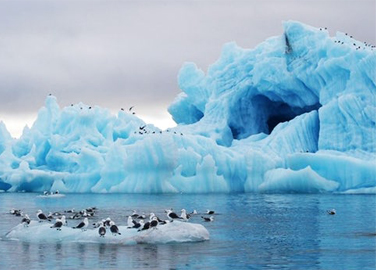
All of the oceans on Earth are estimated to have a volume of 0.3 billion cubic miles (1.332 billion cubic kilometers) and an average depth of 12,080.7 feet (3,682.2 meters). But the various bodies of water that make up this total ocean area have their own unique characteristics and range in size from the sprawling Pacific to the self-contained Mediterranean.
| S.no | Name | Area | Depth | Place of Greatest Known depth | ||
|---|---|---|---|---|---|---|
| Sq. mi | Sq. km | Feet | Meters | |||
| 1 | Pacific Ocean | 63,800,0000 | 15,55,57,000 | 13,215 | 4,028 | Mariana Trench |
| 2 | Atlantic Ocean | 41,100,000 | 106,460,000 | 12,880 | 3,926 | Puerto Rico Trench |
| 3 | Indian Ocean | 27,240,000 | 70,560,00 | 13,002 | 3,963 | Sunda Trench |
| 4 | Southern Ocean | 7,848,300 | 2,03,27,000 | 13,100 - 16,400 | 4,000 –5,000 | South Sandwich Trench |
| 5 | Arctic Ocean | 54,27,000 | 1,40,56,000 | 3,953 | 1,205 | Arctic Basin 77°45’N; 175°W |
| 6 | Mediterranean Sea | 1,144,800 | 2,965,800 | 4,688 | 1,429 | Off Cape Matapan, Greece |
| 7 | Caribbean Sea | 1,049,500 | 2,718,200 | 8,685 | 2,647 | Off Cayman Islands |
| 8 | South China Sea | 895,400 | 2,319,000 | 5,419 | 1,652 | West of Luzon |
| 9 | Bering Sea | 884,900 | 2,291,900 | 5,075 | 1,547 | Off Buldir Island |
| 10 | Gulf of Mexico | 615,000 | 1,592,800 | 4,874 | 1,486 | Sigsbee Deep |
| 11 | Okhotsk Sea | 613,800 | 1,589,700 | 2,749 | 838 | 146°10’E; 46°50’N |
| 12 | East China Sea | 482,300 | 1,249,200 | 617 | 188 | 25°16’N; 125°E |
| 13 | Hudson Bay | 475,800 | 1,232,300 | 420 | 128 | Near entrance |
| 14 | Japan Sea | 389,100 | 1,007,800 | 4,429 | 1350 | Central Basin |
| 15 | Andaman Sea | 308,000 | 797,700 | 2,854 | 870 | Off Car Nicobar Island |
| 16 | North Sea | 222,100 | 575,200 | 308 | 94 | Skagerrak |
| 17 | Red Sea | 169,100 | 438,000 | 1611 | 491 | Off Port Sudan |
| 18 | Baltic Sea | 163,000 | 422,200 | 180 | 55 | Off Gotland |
| 19 | Arabian Sea | 1,491,000 | 3,862,000 | 15,262 | 4,652 | |
| 20 | Black sea | 168,500 | 436,402 | 7,257 | 2212 | |
Forest
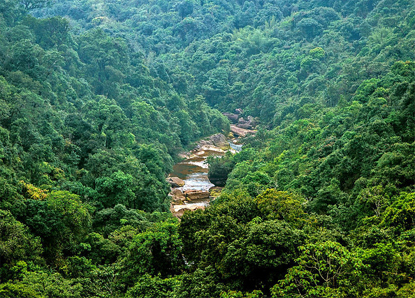
A forest is basically a piece of land that encompasses large number of trees and various varieties of plants. These beautiful creations of nature serve as home for different species of animals.A vast expanse covered with dense trees, shrubs, mosses and wide variety of plants is referred to as a forest. There are different types of forests around the world that are home for different varieties of flora and fauna.
Taiga, Asia-Europe-North America
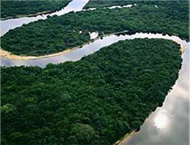
Taiga is technically not a forest, rather it is a Biome. It’s a biological and an ecological system in the form of a forest. Larches, spruces and pines are among the Coniferous trees dominant in this forest. Taiga covers most of the Northern Russia and North America below the Tundra belt. In Russia alone, the land mass occupied by the Taiga as Russian Boreal Forest is close to 12,000,000 square kilometers or 4,633,225 square miles, which is more than the size of China and India put together.
The Amazon Forests, South America

The Amazon Forest, the most popular and well known of all the forests in this list and the world, the Amazon Jungle or Amazonia is indeed a wonder to behold. It is a broadleaf forest and is spread through numerous countries such as Peru, Brazil Colombia, Bolivia, Ecuador, Surinam, Guyana and Venezuela. About 7,000,000 square kilometers or 2.2 million square miles large, this Rainforest is a mammoth in size. The Amazon is the biggest collection of biological diverse species. It is said that one out of every ten living species could be found in the Amazons. Thousands and thousands of mammals, birds, animals and insects have been scientifically registered here. The Amazons absorbs gigatons of Carbon dioxide gas. It is one of the most important factors of the World Climate.
Congo Rain Forest, Africa
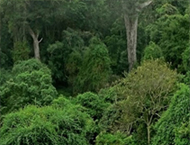
Congo rainforest is part of the Congo Basin in the African Continent, which is about 2,023,428 square kilometers or 781,249 square miles, which is more than the size of Alaska or Saudi Arabia! Congo Rainforest is the second largest tropical forest in the world. Out of over 10,000 identified species of plants in the Congo Rain Forest, about twenty-nine percent of them are uniquely indigenous. Close to 1,000 species of birds and more than 500 species of fishes have been recorded in here. The Congo Basin Forest is home to thousands of unique species of plants and animals. The diverse array of wildlife species– including Elephants, Chimpanzees, Gorillas, Rhinos, and countless others– are beloved around the world, but increasingly endangered. There are also over 2000 species of orchids that are endemic to the basin.
Valdivian Temperate Rainforest, South America

The Valdivian Rainforest is a temperate rainforest in the southern part of South America, between the Andes Mountains and the Pacific coast. With over 248,100 square kilometers or 95,800 square miles, the Valdivian Temperate Rain Forest is the third largest Forest in the world. Due to its isolation, there are numerous endemic species that are exclusively found in Valdivia, such as primitive marsupials and Pudu, the world’s smallest deer. There are also many special trees, including the Antarctic beech, Alerce (which is super tall and old), and monkey puzzle trees.Named after the city Valdivia, this temperate rain forest is full of under-bushes of ferns and bamboos. Both Coniferous, as well as Deciduous trees, can be found in this rain forest even though the most abundant of all is the Evergreen Angiosperm.
Dams
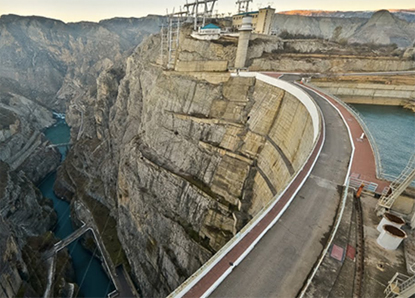
A dam is a barrier that stops or restricts the flow of water or underground streams. Reservoirs created by dams not only suppress floods but also provide water for activities such as irrigation, human consumption, industrial use, aquaculture, and navigability.
Dams are an integral part of modern society. They provide power to millions, create new land for development, and help store water in reservoirs. The dam's primary purpose is hydroelectric power generation.
Nurek Dam, Tajikistan
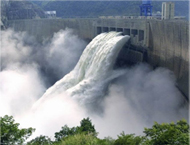
Nurek Dam, one of the world’s highest dams, located on the Vakhsh River in Tajikistan near the border with Afghanistan. An earth-fill dam, it was completed in 1980 and rises 984 feet (300 m) and includes an impervious core of concrete reaching 52 feet (16 m) under the river to bedrock. The dam is 2,309 feet (704 m) wide at its crest. The nine-unit power plant associated with the dam has a design capacity of 2,700 megawatts of electricity, and the water impounded is used to irrigate some 1,600,000 acres (650,000 hectares) of farmland.
Xiaowan Dam, China

China has one of the tallest dams in the world. This dam is built on the Mekong River and has a height of 292 meters. Since this dam is built at a great height, the main purpose of this dam is hydroelectric power generation and has a capacity of 4200 MW. It was constructed between 2002 and 2010 and is the world’s tallest arch dam.
Grande Dixence Dam, Switzerland

Grande Dixence Dam, gravity dam on the Dixence River, Switzerland, completed in 1961. It is 935 feet (285 metres) high and 2,280 feet (695 metres) wide at the crest, has a volume of 7,848,000 cubic yards (6,000,000 cubic metres), and impounds a reservoir of 325,000 acre-feet (401,000,000 cubic metres).
Enguri Dam, Georgia

In Georgia there is a dam that is worth seeing for tourists and travelers. Inguri Dam was built on the river of the same name and has a height of 272 meters, making it one of the highest settlements in the world. The construction work on the Inguri river began more than 50 years ago. For the first time the hydroelectric power plant had already started in 1977.
Vaiont Dam, Italy
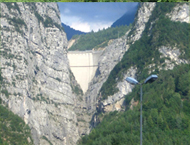
Vaiont Dam, also spelled Vajont Dam, disused concrete arch dam across the Vaiont River near Monte Toc in Italy. With a height of 262 metres (859 feet) and crest length of 190 metres (623 feet), it is one of the tallest dams in the world. Originally intended to help industrialize northern Italy, use of the dam was discontinued after a massive landslide into the reservoir in 1963 claimed the lives of about 2,000 people.
Manuel Moreno Torres Dam, Mexico

This embankment dam has a height of 260 meters making it one of the tallest dams in the world. It has been built on the Grijalva River. It took six years to build this dam and it was built between 1974 and 1980. It was recently renovated and is currently the tallest dam in Mexico and is also the largest power station in the country. This dam is located in a geologically precarious area and had to be carefully designed to suit the surrounding conditions.






